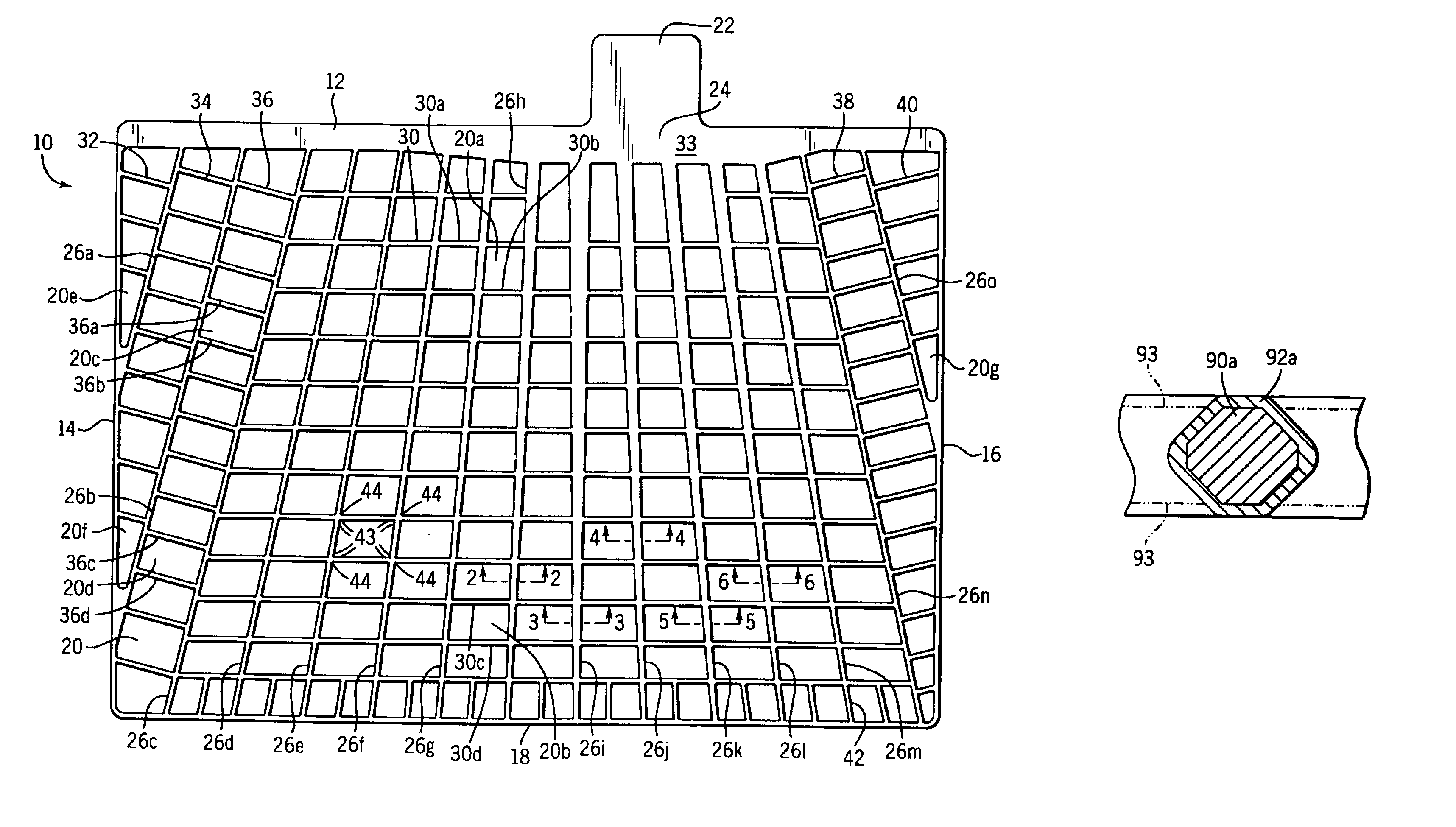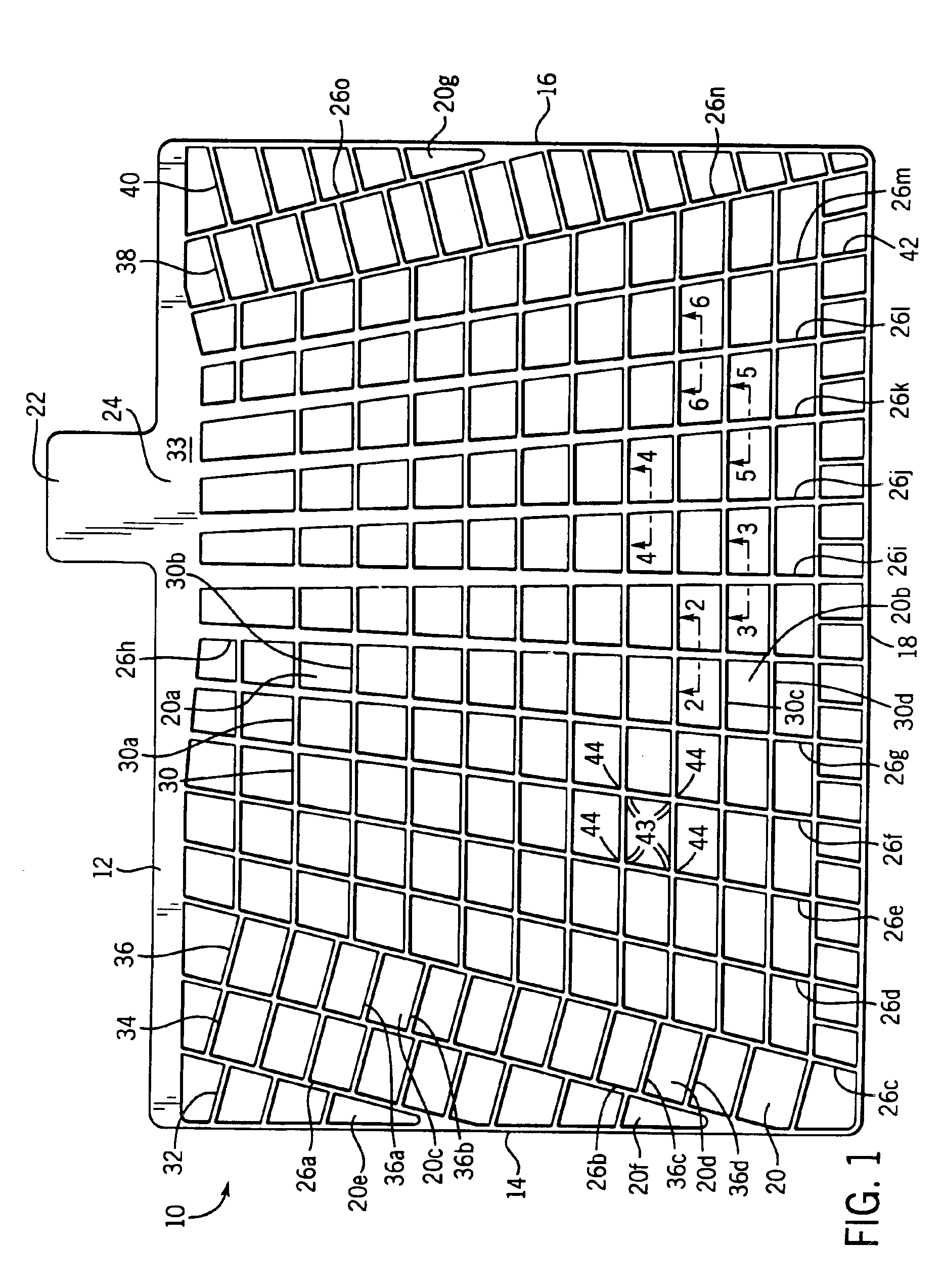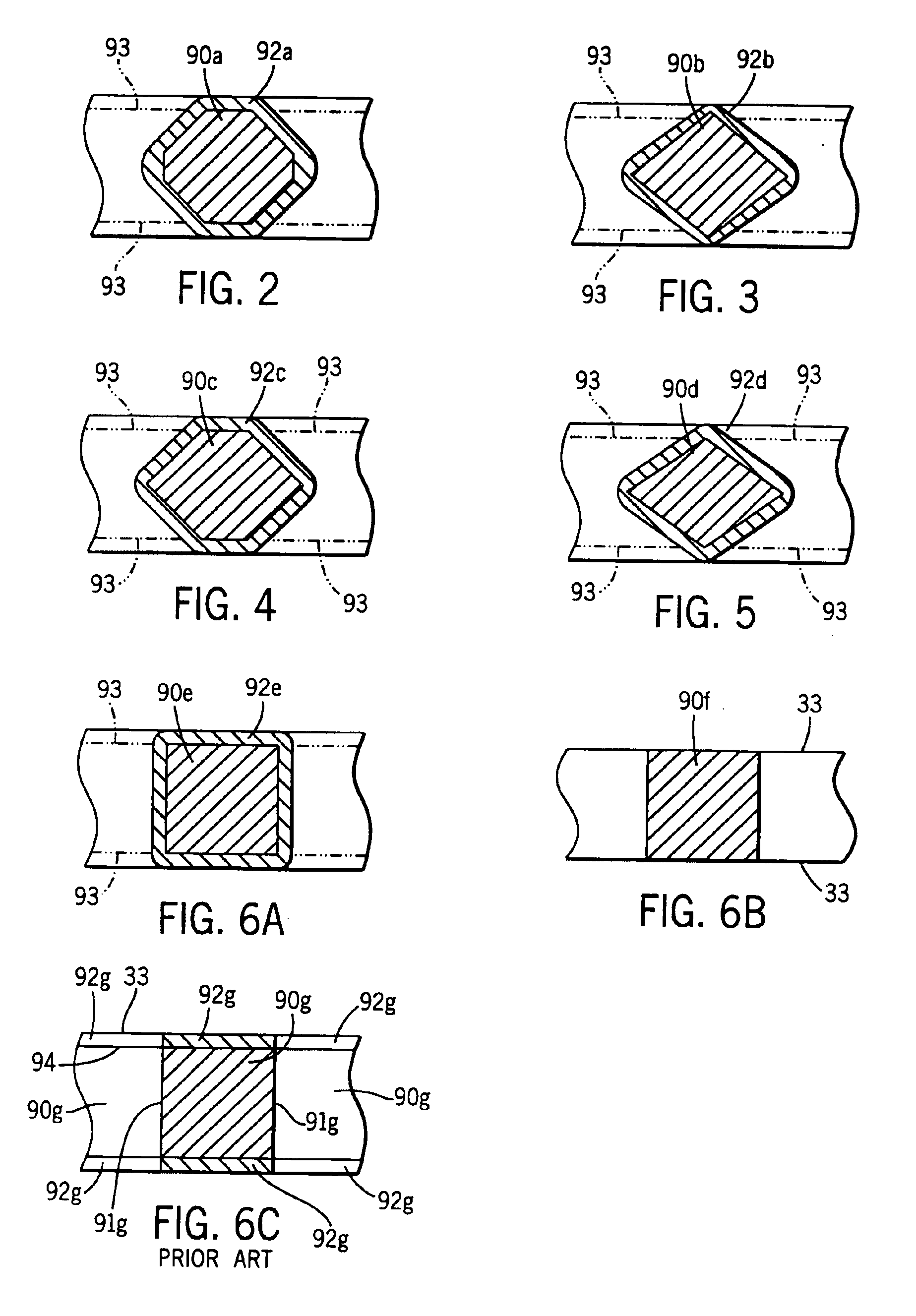Battery grid
a battery grid and battery technology, applied in the field of battery grid modification, can solve the problems of lead-acid batteries failing in service, batteries having lead-antimony grids that require periodic maintenance, water loss due to gassing, etc., and achieve the effects of increasing the cycle life of batteries, enhancing adhesion, and increasing the formation efficiency of batteries
- Summary
- Abstract
- Description
- Claims
- Application Information
AI Technical Summary
Benefits of technology
Problems solved by technology
Method used
Image
Examples
example 1
[0085]A continuous strip was prepared from a lead-alloy having the following composition: 0.0425 wt. % calcium, 0.925 wt. % tin, 0.013 wt. % aluminum, 0.0125 wt. % silver and balance lead. A series of interconnected battery grid shapes were then formed in the strip in a progressive punching operation, i.e., features were added to the battery grid through several punching operations. The battery grid wire sections of the strip were then processed in a coining station to coin the grid wires so that the grid wires had a cross-section similar to the grid wire cross-sections 90c in FIG. 4. The interconnected battery grids were then divided into individual grids. The grids were then pasted with a conventional battery paste and formed into battery cells. The battery cells were then cycled in accordance with the SAE J240 life test procedure at a temperature of 75° C. (167° F.) to measure the service life.
example 2
[0086]A continuous strip was prepared from a lead-alloy having the following composition: 0.0425 wt. % calcium, 0.925 wt. % tin, 0.013 wt. % aluminum, 0.0125 wt. % silver and balance lead. A series of interconnected battery grid shapes were then formed in the strip in a progressive punching operation, i.e., features were added to the battery grid through several punching operations. The battery grid wire sections of the strip were then processed in a coining station to coin the grid wires so that the grid wires had a cross-section similar to the grid wire cross-sections 90c in FIG. 4. The interconnected battery grids were then divided into individual grids. The grids were then hand dipped into a pot of molten 94 wt. % lead—6 wt. % tin coating alloy. The grids were dipped slowly into the melt until they bottomed out in the pot and then slowly withdrawn at the same rate for a total immersion time of about 2 seconds. The coating was uniform with no excess buildup on the grid wires or t...
example 3
[0087]A continuous strip was prepared from a lead-alloy having the following composition: 0.0425 wt. % calcium, 0.925 wt. % tin, 0.013 wt. % aluminum, 0.0125 wt. % silver and balance lead. A series of interconnected battery grid shapes were then formed in the strip in a progressive punching operation, i.e., features were added to the battery grid through several punching operations. The battery grid wire sections of the strip were then processed in a coining station to coin the grid wires so that the grid wires had a cross-section similar to the grid wire cross-sections 90c in FIG. 4. The interconnected battery grids were then divided into individual grids. The grids were then hand dipped into a pot of molten 94 wt. % lead—3 wt. % tin—3 wt. % antimony coating alloy. The grids were dipped slowly into the melt until they bottomed out in the pot and then slowly withdrawn at the same rate for a total immersion time of about 2 seconds. The coating was uniform with no excess buildup on th...
PUM
| Property | Measurement | Unit |
|---|---|---|
| weight percent | aaaaa | aaaaa |
| weight percent | aaaaa | aaaaa |
| melting point | aaaaa | aaaaa |
Abstract
Description
Claims
Application Information
 Login to View More
Login to View More - R&D
- Intellectual Property
- Life Sciences
- Materials
- Tech Scout
- Unparalleled Data Quality
- Higher Quality Content
- 60% Fewer Hallucinations
Browse by: Latest US Patents, China's latest patents, Technical Efficacy Thesaurus, Application Domain, Technology Topic, Popular Technical Reports.
© 2025 PatSnap. All rights reserved.Legal|Privacy policy|Modern Slavery Act Transparency Statement|Sitemap|About US| Contact US: help@patsnap.com



